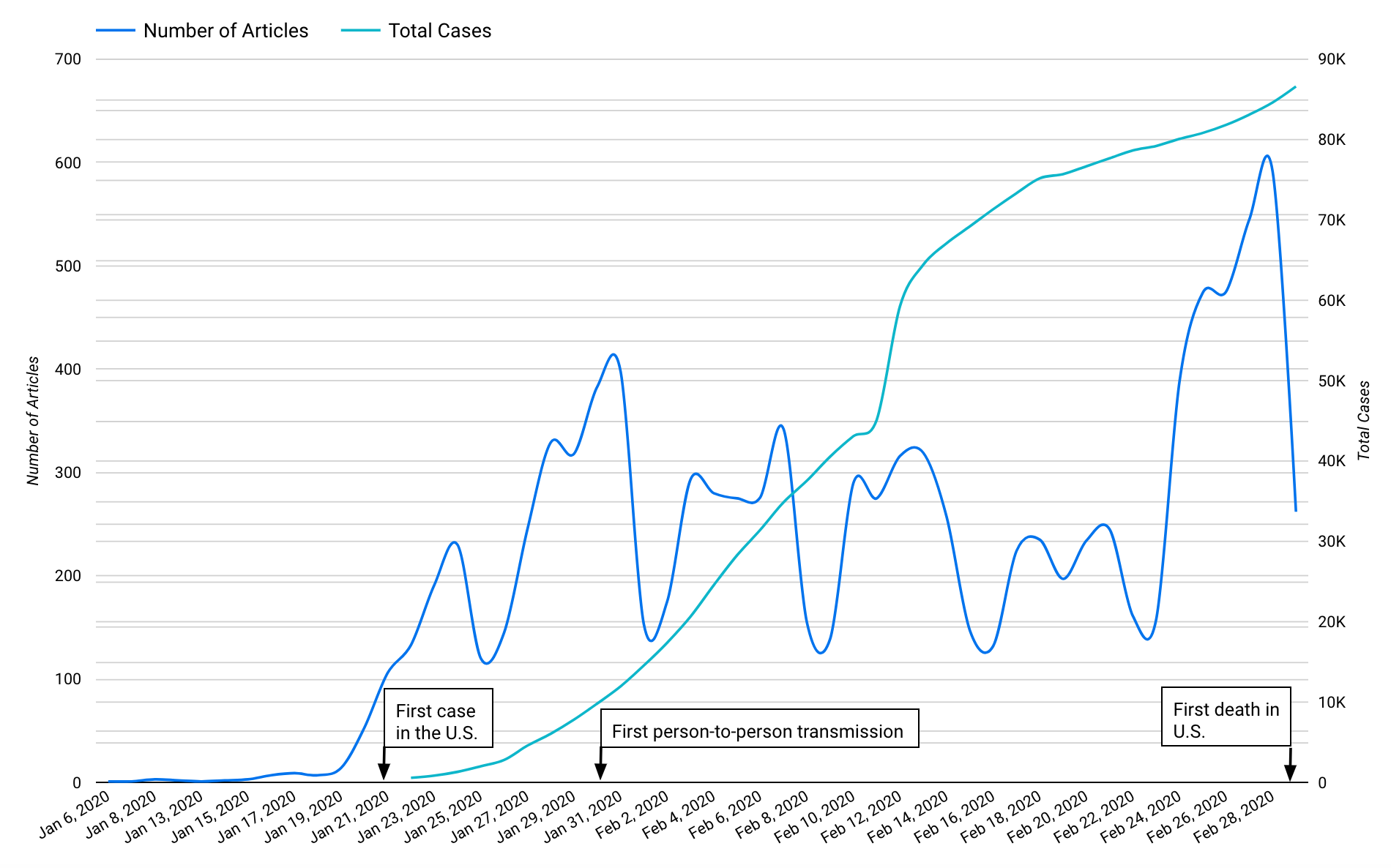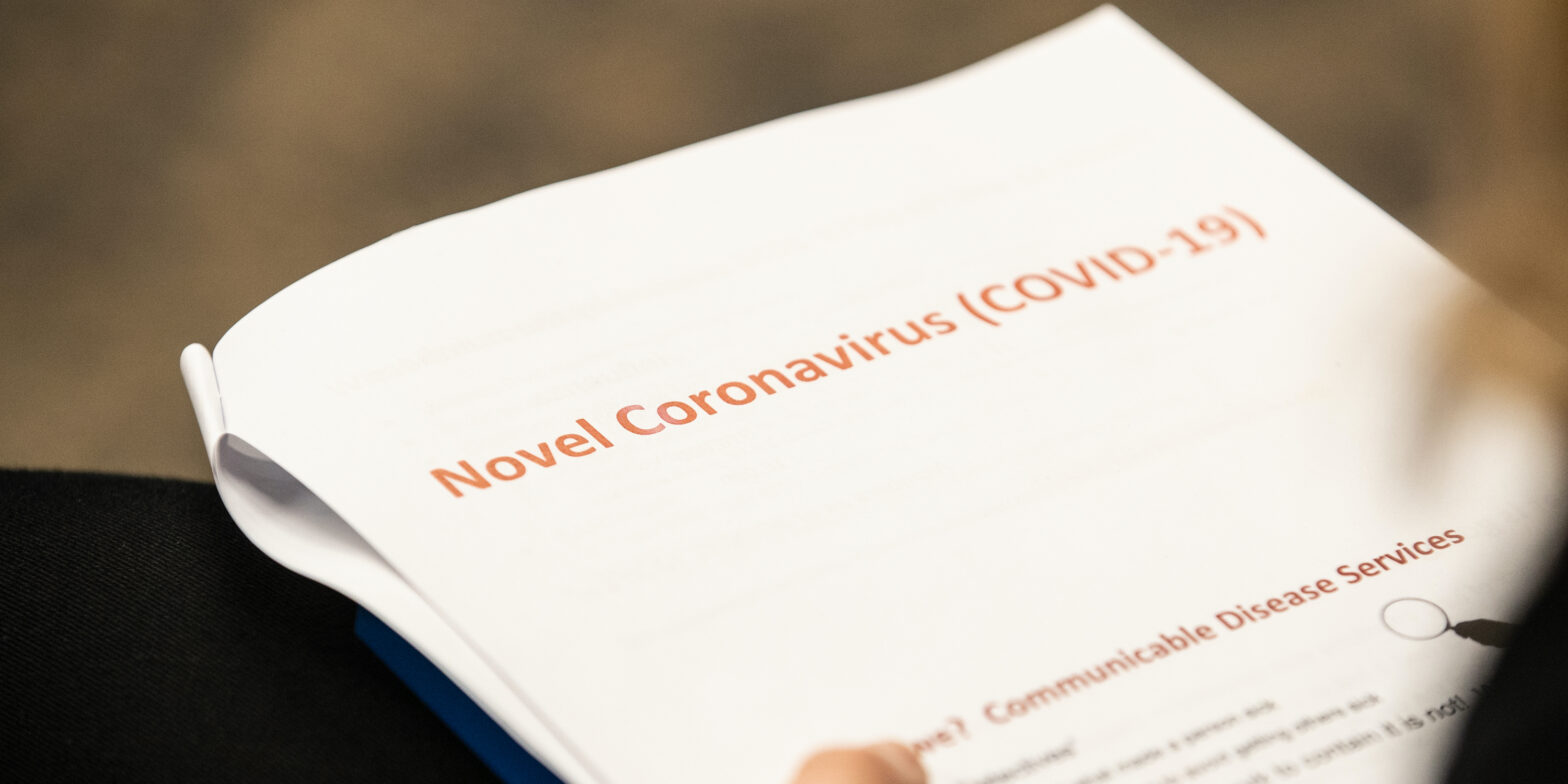Misinformation about the outbreak of Coronavirus, or COVID-19, has arguably spread as fast as the disease itself. From myths like garlic’s ability to stave off the illness to the virus being a purpose-built bioweapon, information runs the gamut from harmless to endangering. At large, the wrong information can cause panic and even undermine epidemiological efforts to stem the global spread of the virus.
We assessed the credibility of 10,700 articles published about COVID-19 from Jan. 1 through Feb. 29 using The Factual’s algorithm on article credibility. When it comes to health crises, getting the right information matters most, so we’ve identified the best places for well-resourced information about COVID-19.
Please check your email for instructions to ensure that the newsletter arrives in your inbox tomorrow.
Which are the most credible articles on COVID-19?
- Will the New Coronavirus ‘Go Away’ in April?
FactCheck – 98% - The novel coronavirus finally has a name—two of them, actually.
Popular Science – 97% - Biologists rush to re-create the China coronavirus from its DNA code
MIT Technology Review – 96% - The Novel Coronavirus Outbreak
Center for Strategic and International Studies – 90% - ‘The disruption is enormous.’ Coronavirus epidemic snarls science worldwide
Science Magazine – 90%
Each of these articles scores 90% or higher, which means they have a 90% or higher chance of being credible. Less than 1% of the articles rated by The Factual have credibility ratings of 90% or above.
Each of these articles has the hallmarks of highly credible reporting. They are written by healthcare, science, or policy experts, have dozens of authoritative sources, are neutral rather than alarmist in their writing tone, and are on sites that have a reputation for highly credible news.
Which news sites are most credible on COVID-19?
When it comes to matters of epidemiology, health systems, and complex multivector issues like the spread of a global virus, it should be no surprise that science-based mediums are the safest bet for reliable information. These include science-focused publications, think tanks, and fact-checking sources.
Best Outlets:
- FactCheck (Average 88% across 16 articles)
- Popular Science (Average 88% across 9 articles)
- MIT Technology Review (Average 85% across 10 articles)
- Ars Technica (Average 84% across 18 articles)
- The Conversation (Average 82% across 19 articles)
Which sites are most up-to-date on COVID-19?
Some of the most popular outlets are not good places to get information about COVID-19. For example, Fox News scored 56%, CNN scored 54%, and even USA Today, the nation’s newspaper with the most subscribers, only scores 60%.
While we would advise against obsessing over the progress of the disease, there are a few outlets that have been publishing at a very high frequency about the disease, and with higher average credibility than other outlets. These places can be useful for tracking new developments, but we advise confirming new information using the more scientific outlets mentioned above.
Outlets with high publication frequency:
- New York Times (73% – 321 articles – 5.4. articles/day)
- CNBC (73% – 572 articles – 9.5 articles/day)
- BBC (69% – 333 articles – 5.5 articles/day)
- The Guardian (68% – 380 articles – 6.3 articles/day)
Did the media cover COVID-19 adequately in time?

Media coverage of COVID-19 actually started robustly in January, when the disease was largely affecting Hubei province in China, with several cases in other East Asian and Southeast Asian countries.
News outlets were already publishing 200+ articles/day by mid-January, a pace that they’ve kept up since. This is when the number of people infected was well below a thousand. It’s fair to say the media took the issue seriously early on and reported the issue widely.
The number of total cases skyrocketed on February 12 when China reclassified suspected patients within Hubei province to confirmed cases, bringing new light to the epidemic’s growth.
Somewhat surprisingly, the rate of articles published didn’t jump at this time, perhaps a signal of complacency or uncertainty as the disease remained serious in China but seemed to only yield mixed impacts abroad.
The tenor of the media changed in the final week of February, with a string of new cases and the first confirmed fatality from COVID-19 within the United States occurring on February 29. The alarm bells began to ring more clearly, with the CDC suggesting it was not an issue of if but when the disease would appreciably affect the United States. On February 28, The Factual observed nearly 600 articles published about the subject, suggesting that coverage and the disease itself are expanding rapidly in tandem.
Please check your email for instructions to ensure that the newsletter arrives in your inbox tomorrow.
How credible is coverage of COVID-19 overall?
The average credibility of articles about the disease is just 62.5%. By our metrics, that means each article has just a 62.5% chance of being credible.
For comparison, our dataset on articles about the 2020 Democratic candidates in the same 2 months was roughly 60%. The problem is that those articles about politics are highly opinionated and swayed by the political biases of outlets and authors; articles about a health emergency, especially a global one, should be evidenced-based and minimally speculative. But the low overall credibility means there is a constant risk of misinformation.
Here to Stay
By most estimates, COVID-19 is here to stay, at least for the foreseeable future. Work on vaccines is under way, but that process will likely take 18 months. That means we have a bumpy year ahead of us, in terms of mitigating the effects and spread of the disease as well as misinformation.
*This blog was originally published on March 5, 2020 and has since been updated.

